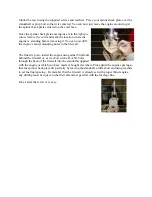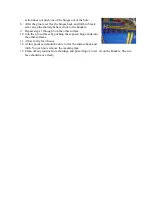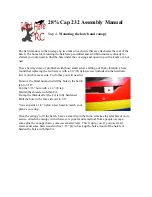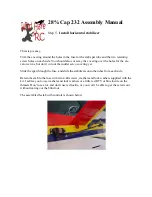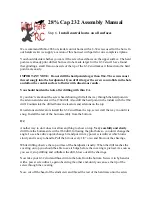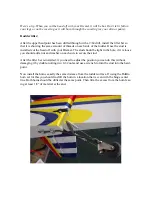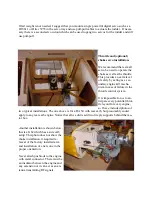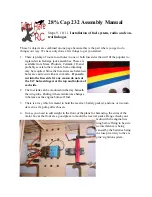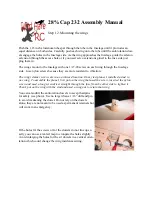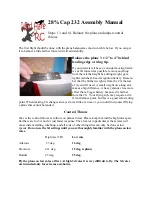
The first flight should be done with the plane balanced as shown in table below. If you can get
it to balance a little farther forward it will add stability.
Balance the plane 3 1/2” to 4” behind
leading edge at wing tip.
If your plane is tail heavy, consider moving batter-
ies as far forward as possible, remove anything
from the tail that might be adding weight, get a
lighter tailwheel, heavier ignition battery. Remem-
ber that the farther weight is from the CG the less
of it you will need. A small weight on a long arm
makes a big difference. A heavy spinner has more
effect that a bigger battery because it is farther
from the CG. Your flying style may require a dif-
ferent balance point, but this is a good safe starting
point. When making CG changes always do it a little at a time or you could find yourself flying
a plane that cannot be landed.
Control Throws
We set the control throws as follows on planes in test. Please keep in mind the high rates speci-
fied here are for 3d, not for just faster response. The elevator in particular at these rates will
cause instant stalling, tumbling, and all sorts of other things that can only be done at low
speeds.
Do not use the 3d settings until you are thoroughly familiar with the plane on low
rates.
High rate (3D)
Low rate
Ailerons
23 deg
16 deg
Elevators 40+
deg.
12 deg. is plenty
Rudder
45
deg.
25 deg
.
Fly the plane on low rates at first. At high 3d rates it is very difficult to fly. The 3d rates
are intended only for extreme aerobatics.
28% Cap 232 Assembly Manual
Steps 13 and 14. Balance the plane and adjust control
throws

